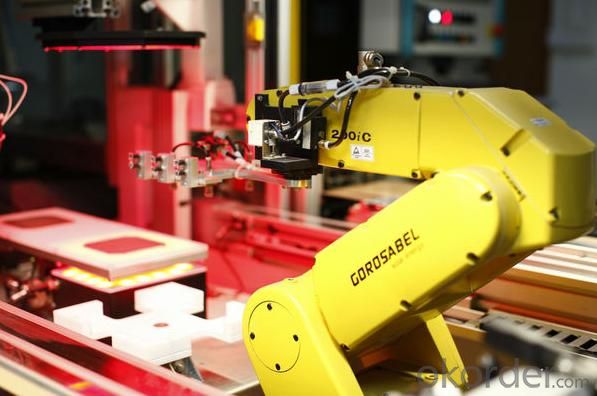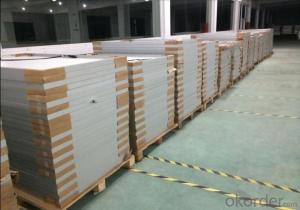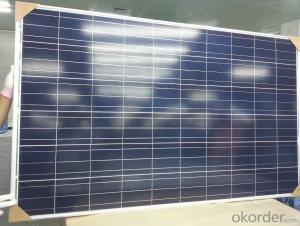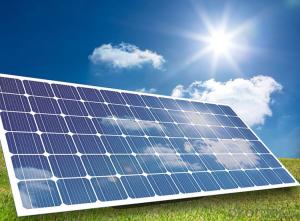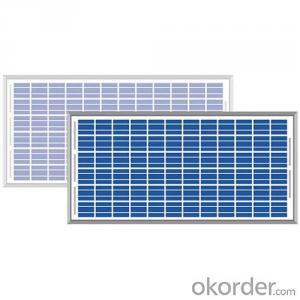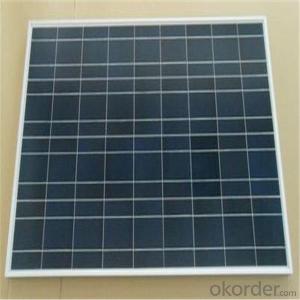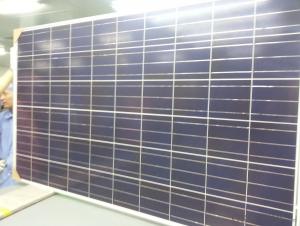Sc Free Solar Panels 300w 315w Poly Panel for Solar System with All Certificate
- Loading Port:
- Shanghai
- Payment Terms:
- TT OR LC
- Min Order Qty:
- 210 pc
- Supply Capability:
- 100000 pc/month
OKorder Service Pledge
OKorder Financial Service
You Might Also Like
Specification
300W 315W Poly Panel for Solar System with all Certificate
MANAGEMENT SYSTEM
ISO 9001: Quality management system
ISO 14001: Standard for environmental management system
OHSAS 18001: International standard for occupational health and safety assessment system
Safety
1. salt mist corrosion (IEC61701, tested in Intertek)
2. ammonia corrosion (IEC62716, tested in TÜV SÜD)
3. fire risk (Class C, tested in TÜV SÜD and Rheinland)
Reliability
1. PID free products, passing TÜV SÜD system voltage durability test
2. World 1st company to pass “Thresher Test” and “On-site Power Measurement Validation” certificate
3. Bankable products
Performance
1. Advanced glass and solar cell surface texturing allow for excellent performance in low-light environments
2. 100% In-line Electroluminescence (EL) tested during production process ensures modules are high quality
3. Top rank in Photon yield measurement
Electrical Characteristics
STC: lrradiance 1000 W/m2 module temperature 25OC AM=1.5;
Power measurement tolerance: +/-3%
SRP-300-6PA SRP-305-6PA SRP-310-6PA SRP-315-6PA Unit
Rated Power at STC (Pmp) W
Power Tolerance W
Maximum Power at STC W
Minimum Module Efficiency (ηm) %
Open Circuit Voltage (Voc) V
Short Circuit Current (Isc) A
Maximum Power Voltage (Vmp) V
Maximum Power Current (Imp) A
Maximum System Voltage 1000 (TÜV), 600 (UL) V
Maximum Series Fuse Rating 15 A
Temperature Characteristics
Pmax Temperature Coefficient -0.42 %/°C
Voc Temperature Coefficient -0.32 %/°C
Isc Temperature Coefficient +0.04 %/°C
Operating Temperature -40~+85 °C
Nominal Operating Cell Temperature (NOCT) 45±2 °C
Packing Configuration
Container 20’GP 40’GP 40’HC
Pieces per Pallet 21 21 N.A
Pallets per Container 10 22 N.A
Pieces per Container 210 462 N.A External Dimensions 1956 x 992 x 50 mm
Weight 24 kg
Solar Cells
Front Glass 3.2 mm tempered glass, low iron
Frame Anodized/ Electrophoretic aluminium aloy
Junction Box IP65/IP67
Output Cables 4.0 mm2,symmetrical lengths 900 mm
Connector MC4 Compatible
Mechanical Load 5400 Pa
Hailstone Impact Test 80 km/h for 25 mm ice ball
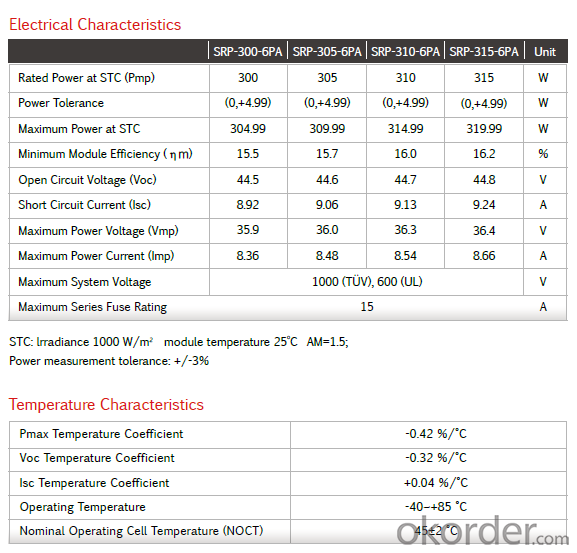
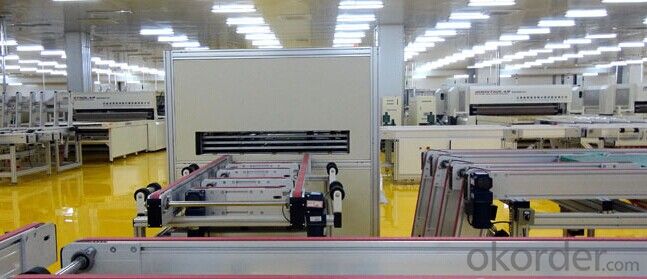
FAQ about Monocrystalline Solar Panel
1. Q: How do I pay for my purchase order?
A: T/T, L/C at sight
2. Q: How can I get sample and how long will it takes?
A: Sample fee will doutbed, but we will return the extra money after you place an order to us, It usually takes 1-3days to produce a sample.
3. Q: What's the MOQ?
A: Depend customer's demand.
4. Q: What's the time delivery?
A: It will take about 5-10 days to finish an order. But the exact time is according to actual situation.
5. Q: Can I have my own customized product?
A: Yes, your customized requirements for color, logo, design, package,shipping marks etc are available.
6. Q: Do you have quality control?
A: Yes, we take great control of the quality.
7. Q:How about the quality?
A: 10-25 Years.
- Q: Hi. I need to build a solar panel for a project. it should be able to light a 60 watt light bulb. also, it should be about 3x3 ft if it is 50% efficient. if anyone knows any websites or can help me, please answer! thanks.
- Making your own photovoltaic (solar electric) panel is a nontrivial matter if you want to get 60 watts out of it. If this is a science fair project, there are some possible paths that I'd suggest: ) Make your own cupric oxide panel. With just one square foot, you can harvest perhaps 0.5 mW in bright sun - enough to power a solar calculator; -or- 2) Buy a panel to light your 60 watt bulb. You could probably get away with a panel that is 6 square feet, but would use a car headlight as the lamp. If you wanted to light a regular household bulb, you would need electronics to step up the voltage, and you would lose a sizeable fraction of the energy just in the conversion. -or- 3) Buy broken solar cell pieces, or individual solar cells, and solder them together into your own panel. This is a LOT of trouble, and is a finicky process to get working and keep working. And it may not end up being cheaper than buying a ready-made panel. But you can claim that you made it! By the way, crystalline silicon panels are in the ballpark of 5% efficient, and a 3' x 3' one would produce in the neighborhood of 20 watts.
- Q: Can solar panels be used in areas with extreme temperatures?
- Yes, solar panels can be used in areas with extreme temperatures. While extreme heat can reduce the efficiency of solar panels, modern solar technologies are designed to withstand high temperatures. Similarly, solar panels can also operate in extremely cold temperatures, although their performance may be slightly affected. Overall, solar panels can still generate electricity effectively in areas with extreme temperatures.
- Q: Photosynthesis is fairly inefficient, but efficient enough to power all life on earth.
- Silicon is a very good conducter. Probably the best for electricity.
- Q: How do I choose the right size of solar panels for my home?
- To choose the right size of solar panels for your home, you should consider factors such as your average electricity consumption, available roof space, and budget. Start by analyzing your energy usage over the past year to determine your average daily kilowatt-hour (kWh) consumption. Next, calculate the solar panel system size needed by dividing your average daily consumption by the average daily sunlight hours in your area. Additionally, assess your roof's orientation, shading, and structural capacity to determine the maximum number of panels it can accommodate. Finally, take your budget into account and consult with a professional solar installer to help you determine the appropriate size and type of solar panels that best meet your energy needs.
- Q: I know what they do and how they work, but at this point they're expensive, don't always produce enough electricity as needed, and can't be used when there's no sun, as in half the day. Wouldn't wind power seem so more efficient? Or if they do use solar panels, how about putting them in the desert. But I really believe that research money should go to fusion generators since that's the future and the answer to our problems. Which is best in your opinion?
- There is not a yes or no answer. But for the majority of the population it is a definite no. Because the energy needed to make a solar panel is more than the energy that a solar panel can return in its life time. so No for cities and urbanized areas because there is already existing infrastructure therefore you'll be wasting more energy getting them installed. And it is better and more efficient to have the more common energy sources for populated areas. However that being said it would be more efficient if you live in a remote area as it would not be worth it to build a huge electricity grid just to power one small house in the middle of no where.
- Q: What specification of solar panel would I need to power a laptop every day? I would need to use it for about 0 hours or so every day. I don't know anything about solar panels, but I am seriously thinking of getting one now and don't know who to ask.
- Ive been employing the comparable photograph voltaic panels for 5 years, have flow some instances so as that they final lots longer than the roofs weve had over us. i'm coaching my young ones a thank you to construct wind turbines, because of the fact we shop having potential failiures whilst the wind blows. and recently its have been given very windy. I can charge banks of battery's and shop my place of work working from dc-ac converters.
- Q: My family moved into a house that came with solar power panels but they are not connected and don't really understand how to even begin.
- You need to know some electrical basics. You need to check if they are still working and determine the output voltage with the use of testers. They are just part of a system that includes other equipments as well like a controller, car batteries, inverters, diodes.
- Q: Can solar panels be installed on a high-rise building?
- Yes, solar panels can be installed on a high-rise building. In fact, high-rise buildings can be ideal locations for solar panel installation due to their height and large surface areas. By utilizing the available roof space, high-rise buildings can generate significant amounts of solar energy, helping to reduce their reliance on traditional energy sources and lowering their carbon footprint.
- Q: i was reading the popular science magazine and i saw that they might make a Sun Powered it Absolutely NOT possible to make a car with a Solar Panel? I dont see any harm in making it..
- Sailboats typically run on wind; hence, Sailboat. I haven't read your article on it though; but, I would think that the solar power would be for the battery powered stuff and possibly a little motor for it. For a car... There are competitions, right now for solar cars. Only they are very light and don't really go that fast. The panels tend to be large and weight a bit more than one would think. I don't understand why they can't simply make a car generate power simply by the rotation of the wheels itself. They could take a hybrid, take out the gasoline portion and it would simply recharge the batteries by the friction of the turning wheels.
- Q: I can't figure out how to charge a Ni Cd (BD 8V Firestorm) battery directly with a solar panel so I've come up with an alternative which might or might not work. I thought I would connect an inverter (I found a nice 400W for $30) to my trucks battery and plug the BD Firestorm battery charger into the inverter. Then I was thinking I could use a 5W solar panel to trickle charge the truck battery and keep it connected after the Ni Cd is charged to ensure the truck battery is topped off. The truck would not be running during this process. Will this solution work? Is there a better solution?
- Two of those solar panels connected in series will easily charge a 8V battery. I would not even be concerned about over voltage the solar cells will have plenty of internal resistance.
Send your message to us
Sc Free Solar Panels 300w 315w Poly Panel for Solar System with All Certificate
- Loading Port:
- Shanghai
- Payment Terms:
- TT OR LC
- Min Order Qty:
- 210 pc
- Supply Capability:
- 100000 pc/month
OKorder Service Pledge
OKorder Financial Service
Similar products
Hot products
Hot Searches
Related keywords




